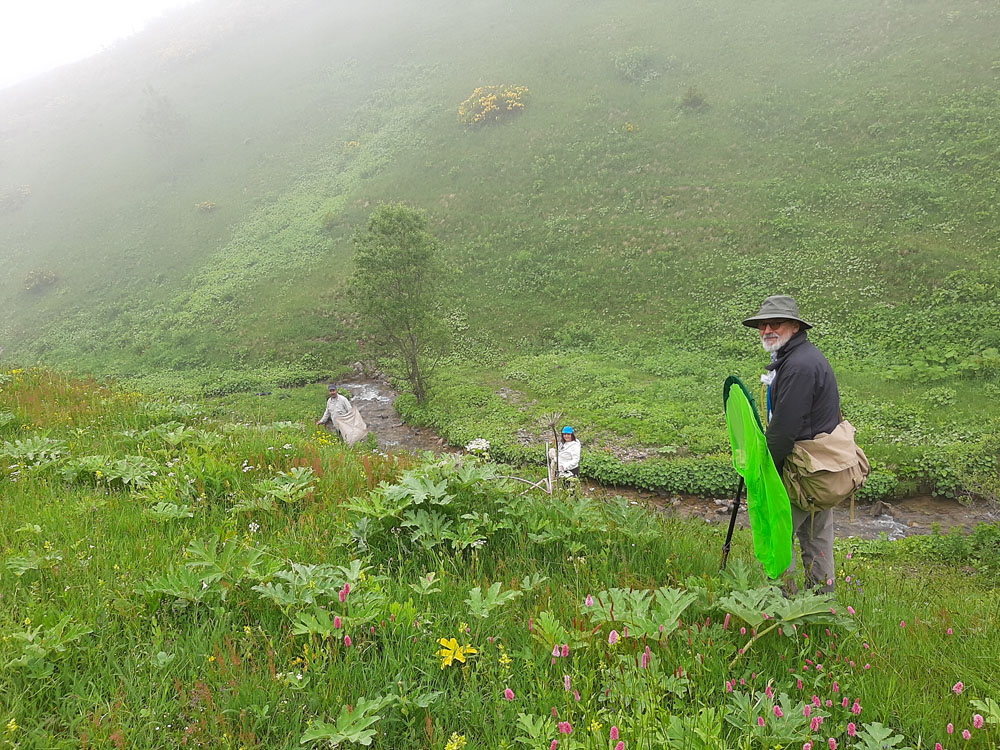Nature Research

Nature studies of biodiversity involve the study of the diversity of life on Earth and the ecological processes that support it. Researchers in this field investigate different ecosystems, species interactions, and factors affecting biodiversity.
The main aspects of nature research related to biodiversity are:
Ecosystem Research: Researchers conduct field work in a variety of ecosystems, such as forests, terrestrial ecosystems, and wetlands.
Species Identification and Monitoring: Identifying and cataloging species is a fundamental aspect of biodiversity research. Researchers may use a variety of methods, including visual observation, collecting samples with a variety of equipment, camera traps, and taking samples for DNA analysis.
Habitat Assessment: It is very important to understand the habitat requirements of different species. Researchers assess the quality and availability of habitats by examining factors such as vegetation structure, water quality and soil composition.
Biotic and Abiotic Interactions: Studying the interactions between species (biotic) and their relationships with the environment (abiotic) helps reveal the complexity of ecosystems.
Conservation and Restoration: Researchers work on strategies to preserve biodiversity, including protecting critical habitats and implementing conservation policies. Restoration ecology focuses on rehabilitating damaged or degraded ecosystems.
Effects of Climate Change: Understanding how climate change affects biodiversity is a growing area of research. Researchers investigate the effects of temperature changes, extreme weather events, and changing precipitation patterns.
Nature studies typically involve the systematic collection of data, samples, or observations directly from natural environments. This type of research is common in a variety of scientific disciplines, including biology, ecology, botany, zoology, and entomology. The main aspects of nature research with a collection context are:
Sample collection: Researchers collect plant, animal, soil, water or other samples from specific ecosystems. This may include sampling for taxonomic studies, genetic analysis or environmental monitoring.
Data collecting: Direct observations and measurements are made in the field. Researchers record information about habitat characteristics, climatic conditions, and species behavior.
Biodiversity Research: Researchers conduct surveys to document species diversity in a particular area. This may include identifying and counting plant and animal species and noting their distribution patterns.
Preservation of Sample: Collected samples are usually preserved for further analysis. Preservation methods vary depending on the type of sample and its intended use, from drying plant samples to using preservatives for animal tissues.
DNA and Genetic Studies: Genetic material is often collected for molecular studies. This involves collecting samples for DNA analysis to examine genetic diversity, population dynamics and evolutionary relationships between species.
Remote Sensing and Technology: Researchers can use remote sensing tools, such as drone or satellite imagery, to gather information about large or inaccessible areas. Technologies such as camera traps and acoustic recorders can help monitor wildlife.


Long Term Monitoring: Some nature research involves establishing long-term monitoring sites to track changes in ecosystems over time. This contributes valuable data to understanding ecological processes and responses to environmental changes.
Climate and Environmental Data: Collecting climate data such as temperature, precipitation and humidity is often an integral part of field research. These data help researchers understand environmental conditions that affect biodiversity.
Collaboration with Communities: Collaboration with local communities is crucial for successful field collection research. Researchers may work with indigenous communities or local residents to learn about the ecosystem and traditional knowledge and ensure sustainable use of resources.
Ethical Considerations: Researchers must adhere to ethical rules, especially regarding the treatment of animals and respect for local cultures. It is also important to obtain appropriate permits for sample collection.
Laboratory Analysis: Collected samples are usually brought back to laboratories for in-depth analysis. This may include molecular and chemical analysis or other specialized techniques, depending on the research goals.
Publication and Communication: Findings from nature studies related to biodiversity are often published in scientific journals, contributing to the global understanding of ecosystems and biodiversity.
Public social assistance: Sharing the findings with the public is important to raise awareness about the value of biodiversity and the importance of conservation efforts. Public participation can also help rally support for environmental protection.


